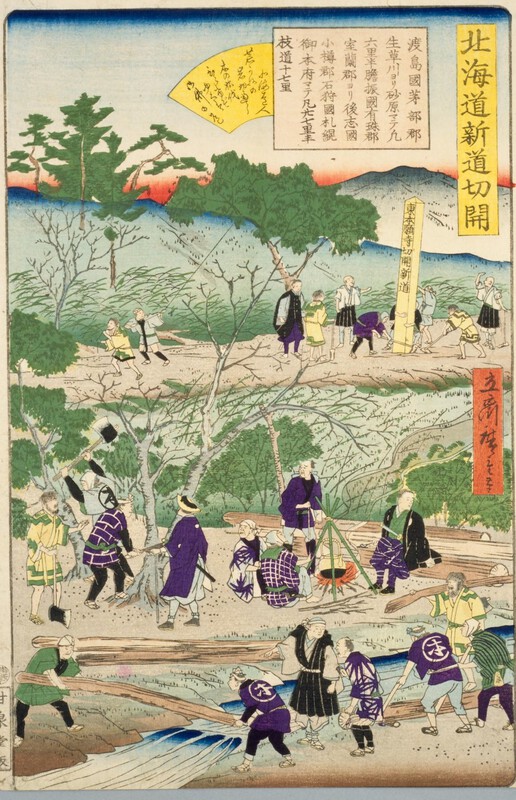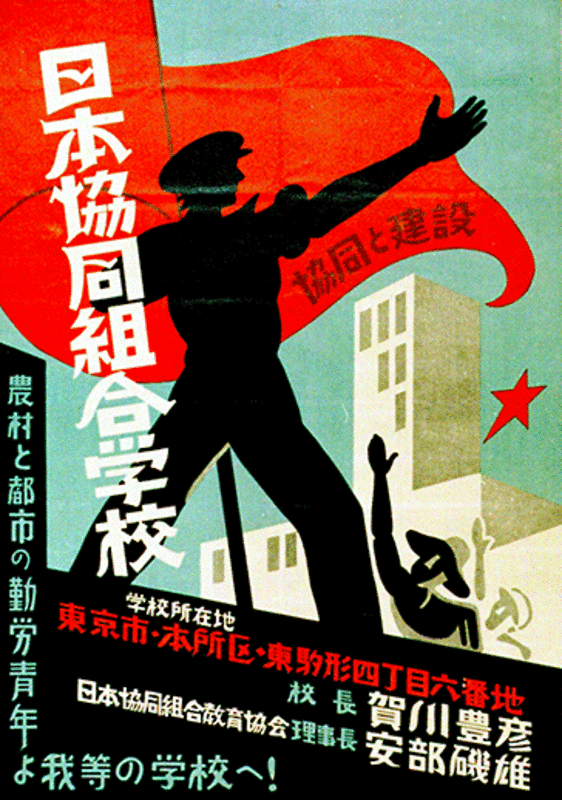Iran + America = Armageddon
By Tanaka Sakai
[Since the publication of Tanaka Sakai’s February report on the US road to war with Iran, vigorous international debate has been touched off by allegations of a critically important Israel lobby in US politics and the making of US policy in the Middle East. Tanaka offers an independent critical Japanese perspective on the forces driving US policy toward Iran, one that goes beyond discussion of the Israel lobby to consider the interaction between fundamentalist Christianity and fundamentalist Islam that has been driving the region and world toward Armageddon. But Sakai looks beyond the US-Islamic clash to examine the doctrinal roots of the Shia-Sunni divisions within Islam and their implications for the future of Iran and the region. In particular, he considers whether divisions internal to Islam will trump the deepening divide between Islamic and Christian fundamentalists. In either event, the prospects for Iran and the Middle East remain dark. MS]
A year and a half has passed since I wrote Christ’s Second Coming and American Politics with the following analysis: “According to Biblical prophecy, when the final battle (Armageddon) between Israel and the anti-Christian armies occurs, Jesus who ascended to heaven during the Roman Empire will walk again on earth and usher in a new era of bliss. Fundamentalist Christians seeking to expand Israel and provoke war in the Middle East to expedite the realization of this prophecy are strong in US politics currently and moving the Bush administration.”
Since then, anti-US sentiment from the morass in Iraq has grown, as have fundamentalist Muslim voices that see the US and Europe, in short the entire Christian world, in bed with Israel. The US has begun to make war plans concerning Iran and it is easy to see Armageddon on the horizon. There are other interesting signals pointing to that direction. In the Middle East too are now anti-US forces doing the same talk: End this world, bring about salvation, and let’s be quick about it. However, the Islamic version of the savior that will walk again, called the Mahdi, is actually supposed to reappear before Christ. President Mahmoud Ahmadinejad believes in the resurrection of the Mahdi, and it is easy to see the signals pointing in the direction of war between two countries both looking towards millenarianism.
The Return
The Koran resembles closely the Old and New Testament texts preceding it. Mohammed, like Christ, Moses, and Abraham, is a prophet who heard the word of God. Mohammed was the last Prophet and there has not been one since. One Israeli who takes a hawkish view on the Palestine issue once told me, “Mohammed was no prophet. He just took from the old in order to make a new religion.” Another has said Mohammed created his doctrine to bring reform to the older ones. Perhaps it is beyond analysis, but for better or for worse some Christian teachings do appear in the Koran: Christ ascended from the cross and the reappearance will mark the end of this world and a new period of salvation welcomed with a “Final Judgement”. In the Koranic version Jesus is named Isa.
But there is something else. The Mahdi will come again to be directly followed by a period of chaos that will lead to the Second Coming of Christ, and in the midst of this chaos will be a battle against the False Prophet, or dajjal. Once the dajjal is defeated Isa will step down from Heaven. Mahdi was Mohammed’s grandson, a human who is the Savior but not a Prophet, which brings the division between Sunni and Shia. For the Sunni Mahdi was a normal human being born in what became Medina, but the Shia believe him the “Last Imam” born in 873 AD (Iran’s population is 75% Shia, Iraq’s is 60%).
The Hidden Imam
For the Shia, the Imam is the historical leader and not simply the grandson of the Prophet Mohammed but a holy man who can transmit the word of God to the believers. The line ended with the twelfth Imam. (That there were twelve is the belief held by the majority of the Shia. Other groups within the sect believe differently: The Ismaili holds that there were only seven, and the Zaydi five.) It is thought that the Last Imam did not die and continues in a form that cannot be seen by humans and will therefore appear again when this world ends. Since it is against Islamic teachings to believe that he will come down from heaven in the manner of Christ in the form of a prophet – there can be no prophet but Mohammed – Shia believe the Imam is “hidden”. As they believe in the “original” doctrine, the Sunni treat these beliefs with contempt and fundamentalists see the entire Shia sect as heretical and must be killed.
Much of the Shia are native to the Mesopotamian region. The mysterious, esoteric nature of their beliefs hark back to the pre-Islam religions – Mithraism and Zoroastrianism – originating there and can be compared to esoteric Buddhism and magnum mysterium of ancient Greek and Indian religions.
The Iraq War as the Final Battle
Buddhism too has its salvation figure in the guise of the Miroku Bosatsu, due not to appear until the very far future. The Mahdi in contrast has his day coming. During the 19th century, with British imperialism in the Middle East at its height, many self-declared “Mahdi” religious figures led resistance movements. In Iran Bahaism grew out of Islam directed by its own Mahdi figure. The Sudan uprisings in 1881 also had a Mahdi as its leader. And now 120 years hence post-911 the number of Mahdi fighting resistance wars against the US and British invasion are increasing.
The eighth century 6th Imam Jafar al-Sadiq prophesized the arrival of the Mahdi: “The skies around Baghdad and Qufa will be consumed with fire, houses will topple, multitudes will perish, and an unceasing fear will spread.” The Iraq war might well seem to illustrate this scene exactly. For the Shia the words of the Imam are the words of God, therefore the truth, and it does not take too much of a stretch of the imagination to see that followers of the faith in Iran and Iraq believe the current situation foretells the appearance of the Mahdi. One resistance group led by Sadur active since the invasion has named itself so.
South of Teheran in Iran in Qom stands the Jamkaran Mosque believed built by the last Iman before hiding himself. When he does make his appearance as Mahdi he will do so here, worshippers believe. From time immemorial the faithful have come to have their prayers received by the last Imam by writing them on paper and throwing them into the mosque well. From three years ago the numbers in the worshipping throng have increased, a testament to the growing level of expectation.
Ahmadinejad’s Millenarian Vision
Since taking office last August, Ahmadinejad’s strong belief in the return of the Mahdi has been reflected in his words and policies. Speaking at a government-sponsored conference on the subject one month into his administration he said, “The government from now renounces its economic development policies that were based on materialism and secular liberalism. Instead, there will be an effort to raise expectations at the coming of the Mahdi, and domestic and foreign policy will work in that direction…this is the mission of the government.”
This is an extension of the policies coming from his term as Mayor of Teheran. Since assuming the presidency, government funds have been allocated to the renovation of the Jamkaran Mosque, has signed statements avowing allegiance to the Mahdi and thrown his own prayers down into the well of the mosque. These actions taken by themselves might simply be evidentice of an individual caught in the throes of faith and weak in administration; however his 17 September UN General Assembly speech, including his intoning of Islamic, Christian, and Jewish “end of world” prophesies, made plain the grand scale of his belief in global warfare.
The portions of the speech not concerned with nuclear, Palestinian, or Iraqi issues were devoted to religious issues. Concerning the present world situation, “Illusion (meaning that which is experiential in nature) will burn away, and in its place will come the world of the divine (outside human knowledge),” and the world waits for the salvation prophesized by the Christendom and Jewry. He ended with an exultation, a request that “God’s Chosen” would soon come. What was interesting was the way he linked together all three monotheistic faiths and beseeched not only followers of Islam but also Christians and Jews to “throw away Western liberalism and return to the faith of one true God”; since the former arose from the latter two, perhaps this statement is not utterly implausible.
Mirror Images
Former president Hatami’s aim in proposing a dialogue among the three faiths was to reduce Iran’s enemy status in the eyes of the enemy. President Ahmadinejad’s movements are in the complete opposite direction. By using the dialogue of salvation and linking it to the other faiths, he is picking up the gauntlet thrown down by President Bush. Of course this thinking is consistent with fundamentalist tenants now influencing White House policy but each group sees the other as enemy, the opposite mirror image of evil that must be toppled. Both sides however appear to believe that war and only war can solve current problems and the reality of a US air-strike on Iran followed by a prolonged war of attrition seems ever closer.
Western analysts have pointed out that Ahmadinejad, while in his twenties as the leader of a religious student movement, was a member of the Hojjatieh secret society whose aim was to bring about the return of the Mahdi. The group was banned by the Ayatollah Khomeini in 1983 but in its underground form penetrated government and religious structures and with Ahmadinejad’s election its members have been appointed to high-ranking posts. Almost simultaneous was the emergence of the Neoconservatives closely linked with fundamentalist Christianity (despite the presence of a large number of Jews) who worked in secret in the 1970’s and have since come to hold authority with Bush’s election. Their first act was to invade Iraq. Neocons believe it is best if only an inner circle of highly-placed individuals are in the know about important political information; for the general public to know is simply a waste. “For the followers the truth, for the rest deception” appears to be in accordance with ancient Greek teachings of Plato. Thus were the lessons of University of Chicago political philosopher Leo Strauss with who many Neocons studied. Hence there is a connection with the secrecy of the Shia that originated from Persian culture that was also influenced by the Ancient Greeks. Shia depends upon a “between the lines” reading of the Koran to uncover truths lying behind broader interpretations. Both in their secrecy and their connection to religion Ahmadinejad and the Neocons resemble each other.
The hidden motive of International Policy
While the Neocons say they are working towards world democratization, their self-defeating plans for Iraq, use of democracy as an antagonizing force against Islamic fundamentalism, and in general raising of anti-US feeling in the Middle East and Europe points to another hidden motive. In fact I predict the real objective is a new world multipolarism based on the principles of capital. In actual fact, the Neocons, with Ahmadinejad and Hojjatieh, do not in their heart of hearts believe in the return of the Mahdi.
Actually what the Neocons seek is that the Islamic world unite. The consequence of each group antagonizing the other and the other responding in kind is the death of liberalism and any pro-US sentiment in the Middle East, and the growth of a pan-Islamicism intimately linked with Iran. Differences between Shia and Sunni will be overcome with anti-US, anti-European sentiment and this relationship will be cemented by the quagmire the US will find itself in if it commits to a war with Iran. Since I am not a monotheist I am not sure if either Christ or the Mahdi will make their appearance, but they might. Whatever happens it will be the end of US-British hegemony over Middle Eastern affairs, but there is also the likelihood that autonomous blocs of power ruling over the entirety of South and Central America, and over Asia, will be formed.
In the course of pursuing their program of international democratization, the US only contributed to the election of Ahmadinejad, which in turn has brought the Islamic world together and caused the hidden and ultimately (for the US) self-defeating agenda of multipolarism to proceed. I am not sure if this was sudden, or perhaps planned through secret dealings with Iran’s ultimate power broker, the Ayatollah Khomeini. Who is to say if this hidden agenda of multipolarism actually exists at all? From where I stand, however far from the axis of power this may be, I only see it occurring with alarming synchronization.
This article appeared at Tanaka News http://tanakanews.com/ on February 14, 2006. Tanaka Sakai compiles and writes the regular reports for Tanaka News.
Adam Lebowitz is a teacher and translator who has lived in Japan for 15 years. Having worked for short periods as a baker, natural food retailer, and traditional landscaper, he is now at Tsukuba University in Ibaraki Prefecture, is a co-editor of Jikai, a Japanese-language poetry journal, and a Japan Focus Associate. Posted at Japan Focus on May 8, 2006.





